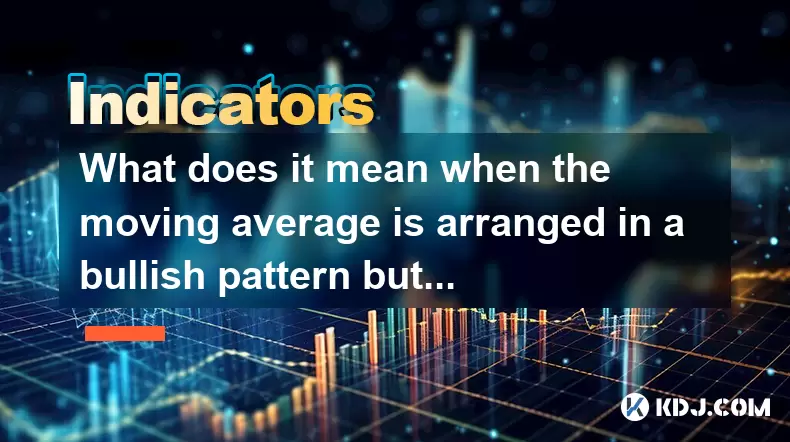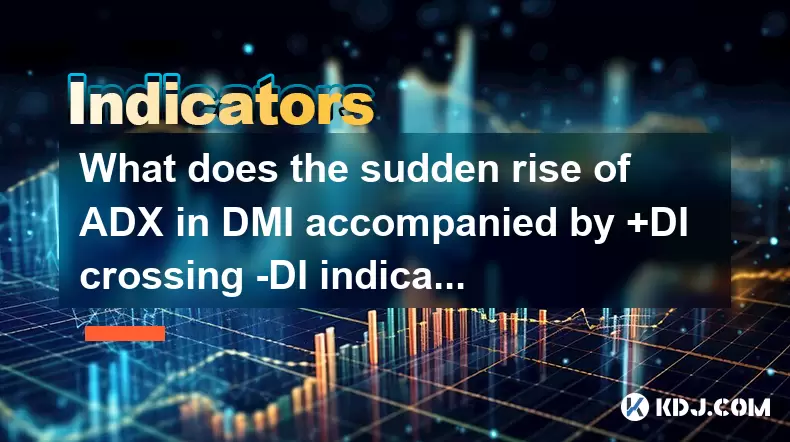-
 Bitcoin
Bitcoin $117400
1.93% -
 Ethereum
Ethereum $3747
3.63% -
 XRP
XRP $3.157
3.09% -
 Tether USDt
Tether USDt $1.000
0.02% -
 BNB
BNB $783.3
3.19% -
 Solana
Solana $186.6
5.64% -
 USDC
USDC $0.9999
0.01% -
 Dogecoin
Dogecoin $0.2375
5.42% -
 TRON
TRON $0.3185
1.32% -
 Cardano
Cardano $0.8191
3.28% -
 Hyperliquid
Hyperliquid $44.43
5.76% -
 Sui
Sui $3.995
9.84% -
 Stellar
Stellar $0.4396
6.27% -
 Chainlink
Chainlink $18.26
4.83% -
 Hedera
Hedera $0.2646
11.88% -
 Bitcoin Cash
Bitcoin Cash $553.5
5.55% -
 Avalanche
Avalanche $24.13
4.73% -
 Litecoin
Litecoin $113.3
1.77% -
 UNUS SED LEO
UNUS SED LEO $8.975
0.11% -
 Shiba Inu
Shiba Inu $0.00001405
5.69% -
 Toncoin
Toncoin $3.319
7.46% -
 Ethena USDe
Ethena USDe $1.001
0.02% -
 Uniswap
Uniswap $10.44
4.98% -
 Polkadot
Polkadot $4.098
4.31% -
 Monero
Monero $328.6
1.87% -
 Dai
Dai $1.000
0.01% -
 Bitget Token
Bitget Token $4.561
2.76% -
 Pepe
Pepe $0.00001261
5.29% -
 Aave
Aave $296.8
4.02% -
 Cronos
Cronos $0.1335
3.28%
What does it mean when the moving average is arranged in a bullish pattern but the K-line closes negatively continuously?
A bullish MA pattern with consecutive red K-lines signals potential weakness despite long-term uptrend structure, warranting caution and confirmation.
Jul 25, 2025 at 10:56 pm

Understanding the Bullish Moving Average Pattern
When the moving average (MA) lines are arranged in a bullish pattern, it typically indicates that shorter-term averages are positioned above longer-term ones. For instance, in a common setup like the 50-day MA above the 200-day MA, this is known as a "golden cross" and is widely interpreted as a sign of long-term upward momentum. Traders often view this arrangement as a signal that the market sentiment is shifting positively. The stacking order—such as the 10-day MA above the 20-day MA, which is above the 50-day MA—confirms the bullish hierarchy. This structure suggests that recent price action has been strong enough to lift short-term averages above longer ones, implying accumulation and potential continuation of an uptrend.
Interpreting Continuous Negative K-Line Closures
Despite a bullish MA configuration, the K-line (candlestick) closing negatively over several consecutive periods can signal underlying weakness. Each red or black candle that closes below its open reflects selling pressure during that timeframe. When this occurs repeatedly, it may indicate that although the broader trend appears upward based on averages, short-term bears are gaining control. This divergence can arise in choppy markets where profit-taking or increased volatility disrupts momentum. The persistence of negative closes, especially on high volume, suggests that buyers are struggling to maintain dominance, even if the overall trend measured by MAs remains intact.
Why Divergence Between MA and K-Line Occurs
The divergence between a bullish MA arrangement and negative K-line closures stems from the different ways these tools measure price. Moving averages are lagging indicators that smooth out price data over time, making them less sensitive to recent fluctuations. In contrast, K-lines reflect real-time supply and demand within specific periods. A series of negative closes may not immediately affect the MA hierarchy because the averages incorporate historical data. For example, strong upward movement weeks ago can keep the 50-day MA elevated, even if the past five days have seen declining closes. This time-lag effect allows temporary countertrend behavior to coexist with a technically bullish structure.
Assessing Market Context and Confirmation Signals
To evaluate the significance of this mixed signal, traders should examine additional technical elements. One approach is to analyze volume patterns during the negative K-line closures. If the red candles appear on increasing volume, it strengthens the bearish implication, suggesting active selling. Conversely, low-volume red candles may indicate lackluster selling pressure and potential exhaustion. Another useful tool is the Relative Strength Index (RSI). An RSI above 70 with negative K-lines could point to overbought conditions and an impending pullback. Alternatively, if RSI is falling from overbought levels, it may confirm weakening momentum. Monitoring support levels, such as previous swing lows or Fibonacci retracements, can also help determine whether the negative closures are corrections within an uptrend or the start of a reversal.
Practical Steps for Traders Facing This Scenario
When encountering a bullish MA setup with consecutive negative K-line closes, traders can take the following actions to manage risk and refine entries:
- Wait for confirmation before initiating long positions, even if the MA structure appears favorable. Look for a green K-line that closes above a key resistance level or a reversal candlestick pattern like a bullish engulfing or hammer.
- Set stop-loss orders below recent swing lows to protect against deeper downside if the bearish momentum accelerates.
- Use smaller position sizes until the conflict between the indicators resolves, reducing exposure during uncertain phases.
- Monitor the relationship between price and the shortest MA, such as the 10-day or 20-day. If price closes below this MA on strong volume, it may signal a breakdown in the short-term trend.
- Avoid relying solely on MAs or K-lines; integrate volume, RSI, and support/resistance analysis to form a comprehensive view.
Historical Examples in Cryptocurrency Markets
This scenario has occurred multiple times in major cryptocurrencies. For example, in early 2021, Bitcoin (BTC) exhibited a bullish MA stack with the 50-day above the 200-day, yet experienced three consecutive weekly red candles amid regulatory concerns. Despite the negative closes, the MA structure held, and price later resumed its uptrend. In contrast, during mid-2022, Ethereum (ETH) showed a similar MA alignment, but persistent red weekly candles on rising volume preceded a breakdown below the 200-day MA, confirming a trend reversal. These cases highlight that while a bullish MA pattern provides context, continuous negative K-line action demands caution and should prompt closer scrutiny of volume and macro factors.
Frequently Asked Questions
Can a bullish moving average pattern still be valid after several red candles?
Yes, the MA pattern remains technically valid as long as the shorter averages stay above the longer ones. The moving average structure reflects cumulative price behavior, so short-term red candles do not automatically invalidate the setup. However, the strength of the signal diminishes if the price continues to weaken.
Should I sell my position if K-lines close red under a bullish MA setup?
Not necessarily. Red closes alone are not a definitive sell signal. Evaluate the volume, candlestick patterns, and proximity to support. If the red candles are small and on low volume, they may represent minor pullbacks. Selling should be based on a confirmed breakdown, such as closing below a key MA or support level.
How many consecutive red K-lines should raise concern in a bullish MA environment?
There is no fixed number, but three or more red candles on increasing volume warrant attention. The context matters more than the count. A series of large red candles near a resistance level is more concerning than small-bodied red candles in the middle of a range.
Does this scenario occur more frequently in crypto than in traditional markets?
Yes, due to the high volatility and 24/7 trading nature of cryptocurrency markets, short-term reversals and emotional trading amplify the occurrence of such divergences. Rapid news cycles and speculative behavior contribute to frequent clashes between long-term indicators like MAs and short-term price action.
Disclaimer:info@kdj.com
The information provided is not trading advice. kdj.com does not assume any responsibility for any investments made based on the information provided in this article. Cryptocurrencies are highly volatile and it is highly recommended that you invest with caution after thorough research!
If you believe that the content used on this website infringes your copyright, please contact us immediately (info@kdj.com) and we will delete it promptly.
- Wall Street's Bitcoin Bonanza: ETF Filings Signal Crypto's Coming-Out Party
- 2025-07-26 15:10:12
- Bitcoin, Cynthia Lummis, and Freedom Money: A New York Perspective
- 2025-07-26 15:10:12
- Bitcoin, Altcoin Season, and Market Shift: What's the Deal?
- 2025-07-26 14:30:12
- PEPE, Altcoins, and Bitcoin: Navigating the Meme Coin Mania in 2025
- 2025-07-26 14:30:12
- UAE's Digital Asset Revolution: Stablecoin Regulations Take Center Stage
- 2025-07-26 10:40:11
- Whale Transactions and ENA Token: Decoding the Withdrawal Dynamics
- 2025-07-26 14:50:12
Related knowledge

What does it mean that the rebound is blocked after the moving average is arranged in a short position for the first time?
Jul 26,2025 at 10:51am
Understanding the Short-Term Moving Average ConfigurationWhen traders refer to a 'short position arrangement' in moving averages, they are describing ...

What does it mean when the price rises along the 5-day moving average for five consecutive days?
Jul 26,2025 at 08:07am
Understanding the 5-Day Moving Average in Cryptocurrency TradingThe 5-day moving average (5DMA) is a widely used technical indicator in cryptocurrency...

What does it mean when the price breaks through the 60-day moving average with a large volume but shrinks the next day?
Jul 26,2025 at 06:01am
Understanding the 60-Day Moving Average in Cryptocurrency TradingThe 60-day moving average (60DMA) is a widely used technical indicator in the cryptoc...

What does the sudden rise of ADX in DMI accompanied by +DI crossing -DI indicate?
Jul 26,2025 at 01:21pm
Understanding the DMI and Its Core ComponentsThe Directional Movement Index (DMI) is a technical analysis tool used to determine the presence and stre...

What does it mean when OBV continues to hit new highs but the price is stagnant?
Jul 26,2025 at 09:57am
Understanding the On-Balance Volume (OBV) IndicatorThe On-Balance Volume (OBV) is a technical analysis indicator that uses volume flow to predict chan...

What does the golden cross of EMA12 and EMA26 but the low trading volume reflect?
Jul 26,2025 at 06:44am
Understanding the Golden Cross in EMA12 and EMA26The golden cross is a widely recognized technical indicator in the cryptocurrency market, signaling a...

What does it mean that the rebound is blocked after the moving average is arranged in a short position for the first time?
Jul 26,2025 at 10:51am
Understanding the Short-Term Moving Average ConfigurationWhen traders refer to a 'short position arrangement' in moving averages, they are describing ...

What does it mean when the price rises along the 5-day moving average for five consecutive days?
Jul 26,2025 at 08:07am
Understanding the 5-Day Moving Average in Cryptocurrency TradingThe 5-day moving average (5DMA) is a widely used technical indicator in cryptocurrency...

What does it mean when the price breaks through the 60-day moving average with a large volume but shrinks the next day?
Jul 26,2025 at 06:01am
Understanding the 60-Day Moving Average in Cryptocurrency TradingThe 60-day moving average (60DMA) is a widely used technical indicator in the cryptoc...

What does the sudden rise of ADX in DMI accompanied by +DI crossing -DI indicate?
Jul 26,2025 at 01:21pm
Understanding the DMI and Its Core ComponentsThe Directional Movement Index (DMI) is a technical analysis tool used to determine the presence and stre...

What does it mean when OBV continues to hit new highs but the price is stagnant?
Jul 26,2025 at 09:57am
Understanding the On-Balance Volume (OBV) IndicatorThe On-Balance Volume (OBV) is a technical analysis indicator that uses volume flow to predict chan...

What does the golden cross of EMA12 and EMA26 but the low trading volume reflect?
Jul 26,2025 at 06:44am
Understanding the Golden Cross in EMA12 and EMA26The golden cross is a widely recognized technical indicator in the cryptocurrency market, signaling a...
See all articles

























































































